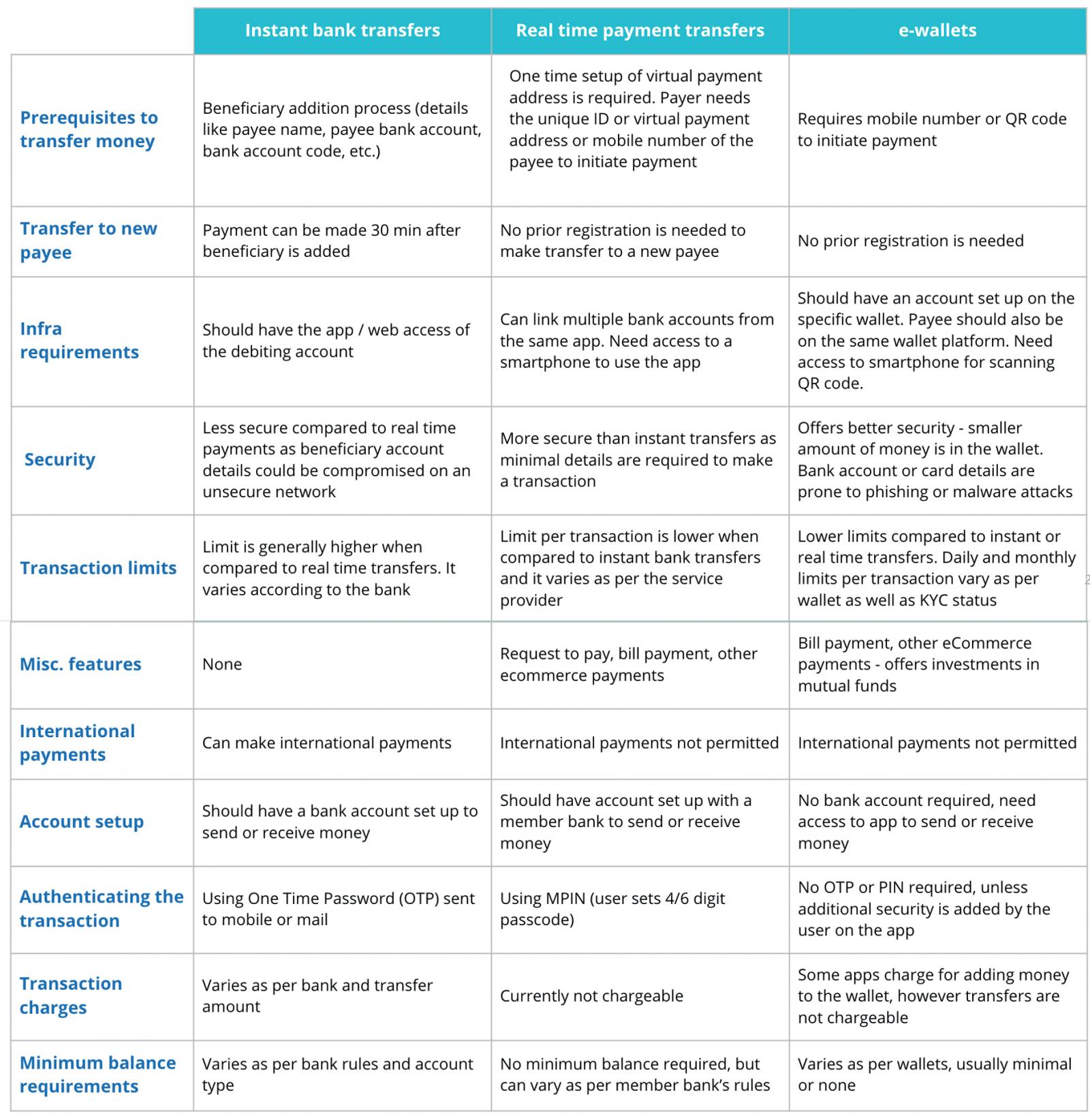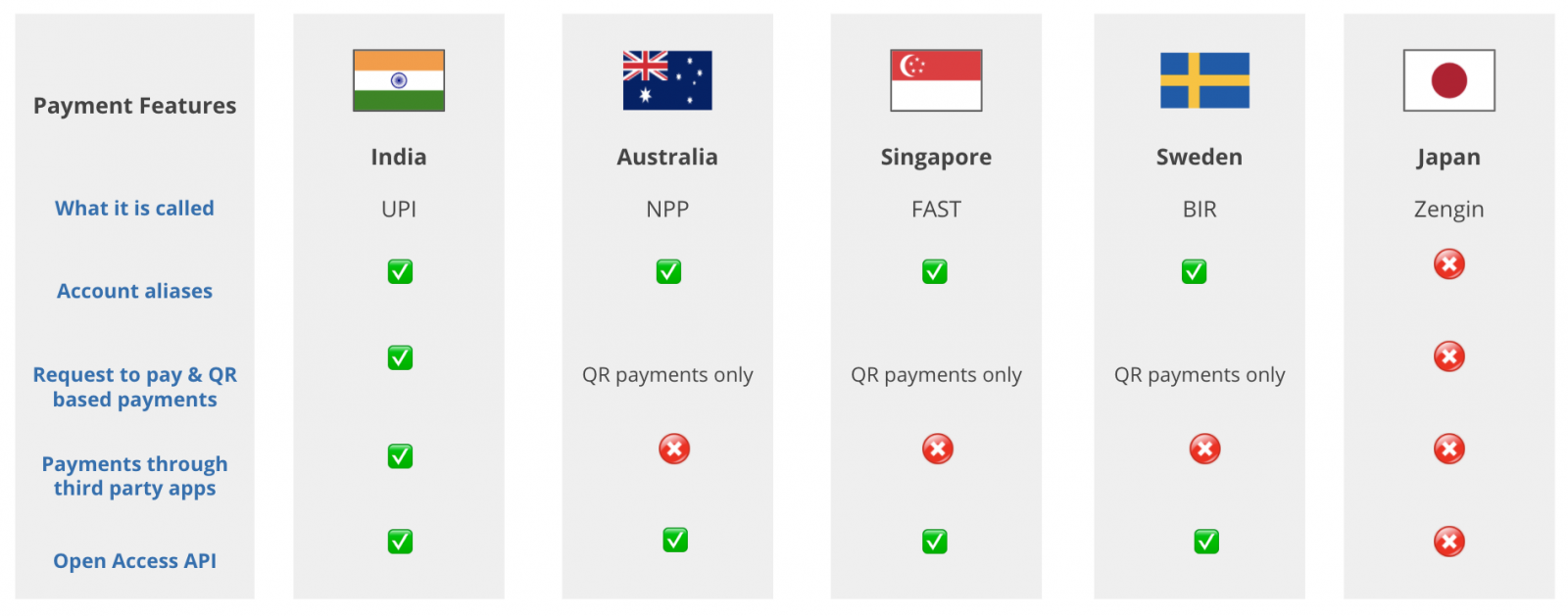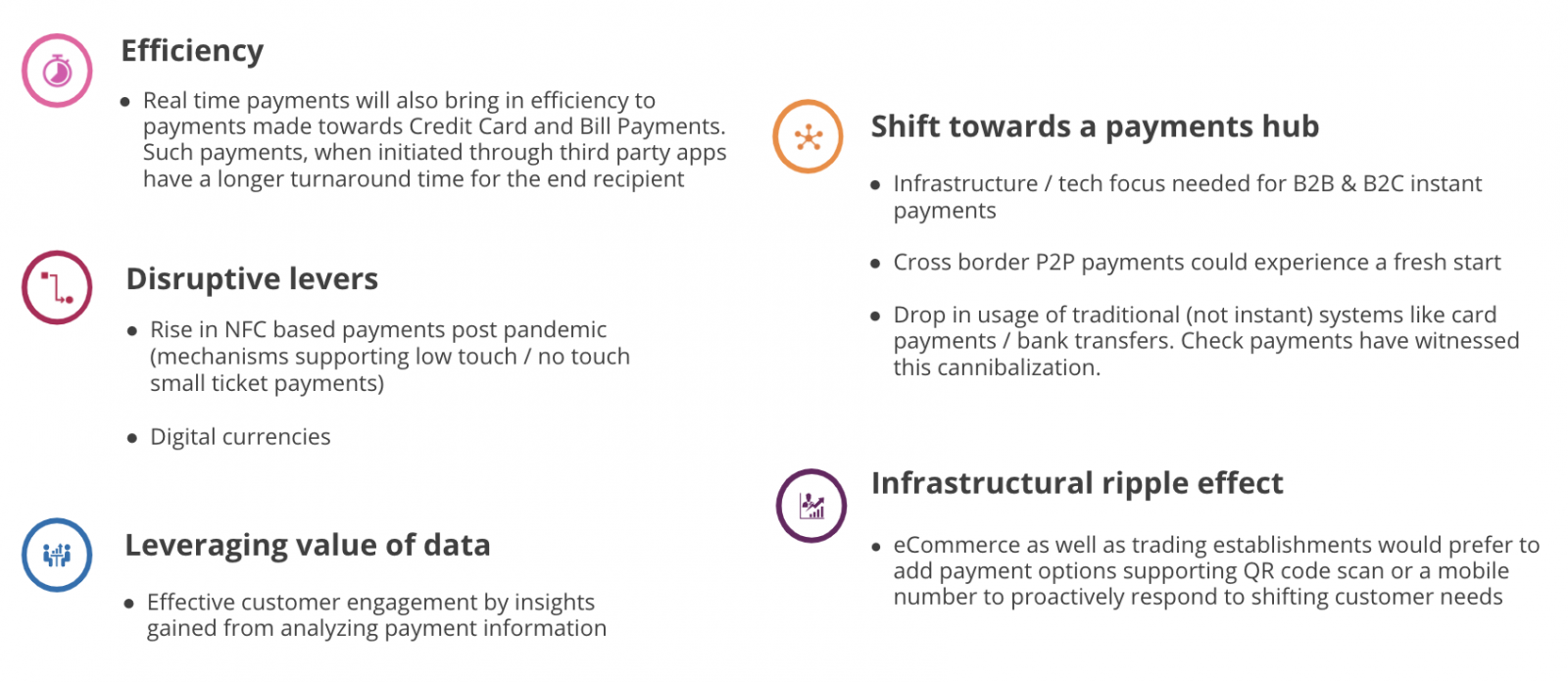Digital innovation
Economic crisis: an unusual catalyst for financial inclusion

Primarily, there are three kinds of instant payment mechanisms that differ from one another in small but significant ways:
Here are the key characteristics summarized below:
 Instant payment infrastructure is currently live in 56 countries including Singapore, India, Poland, US, etc. Over the next few years, 5 more countries - Canada, Peru, Indonesia, New Zealand, Colombia are expected to offer instant payments
Instant payment infrastructure is currently live in 56 countries including Singapore, India, Poland, US, etc. Over the next few years, 5 more countries - Canada, Peru, Indonesia, New Zealand, Colombia are expected to offer instant payments
Disclaimer: The statements and opinions expressed in this article are those of the author(s) and do not necessarily reflect the positions of Thoughtworks.
